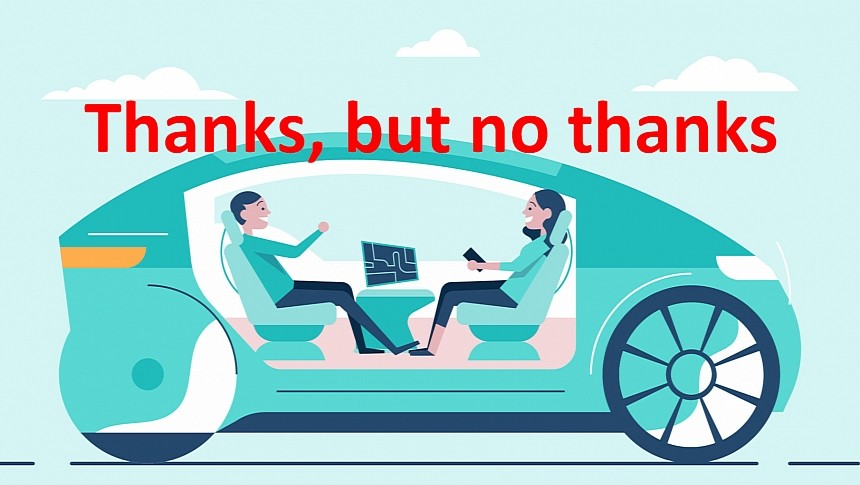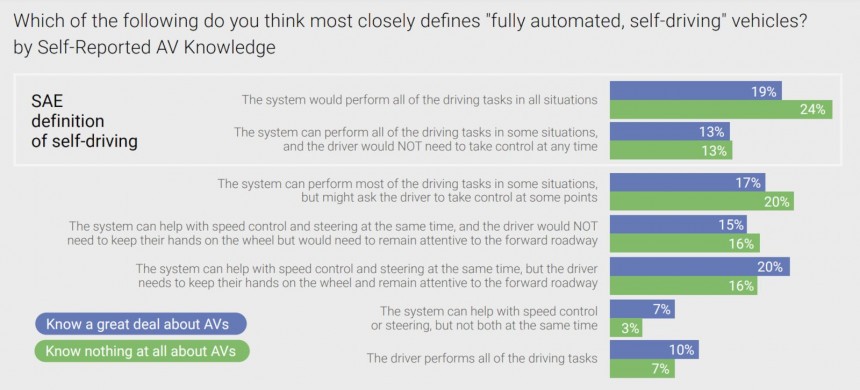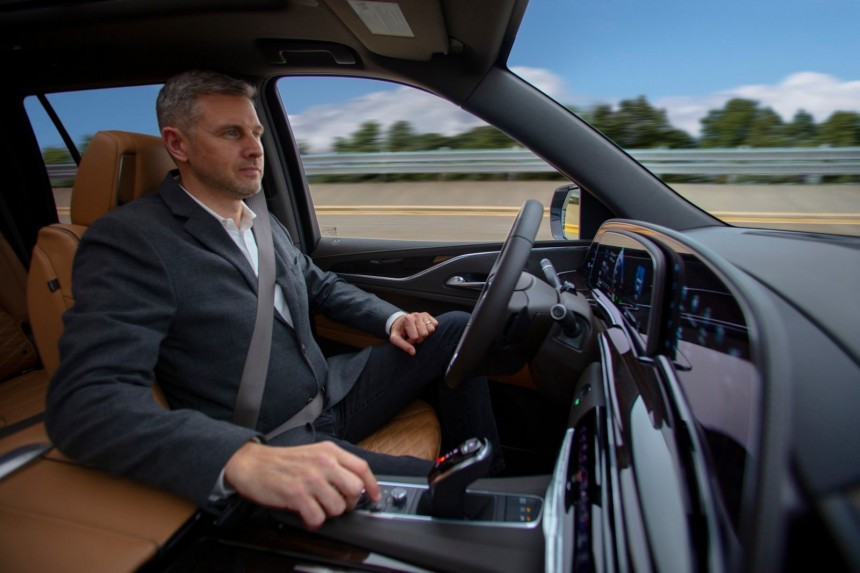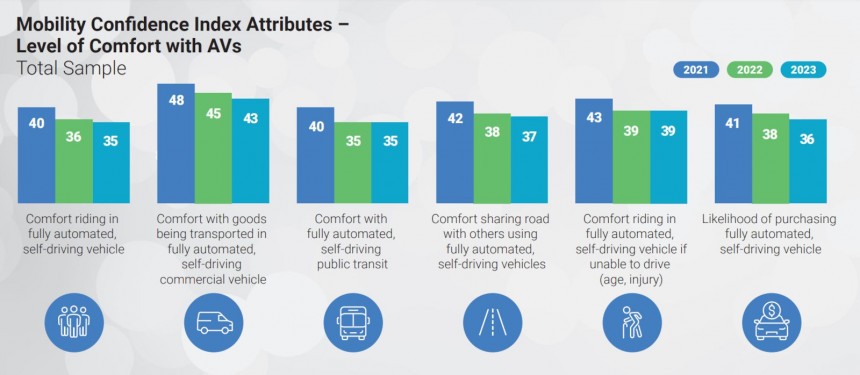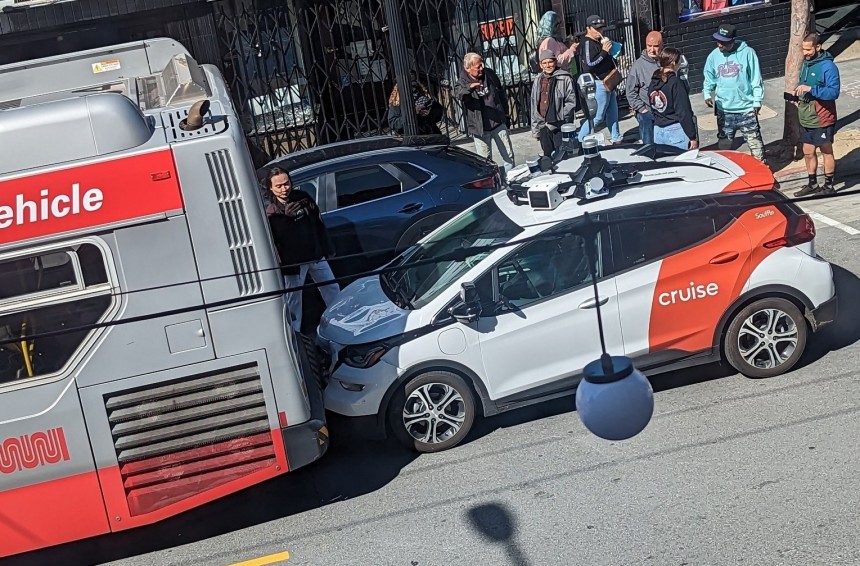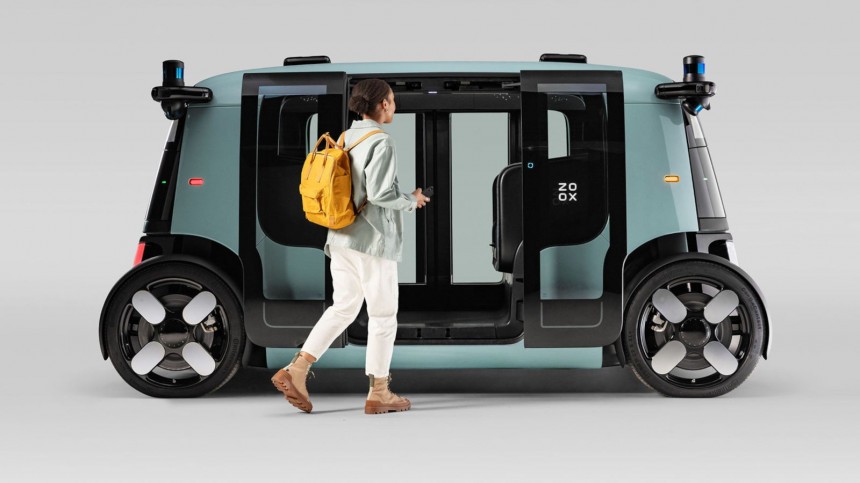JD Power has an interesting approach to monitoring consumers' stance towards automated vehicles. The data analytics, software, and consumer intelligence company partnered with the MIT Advanced Vehicle Technology (AVT) Consortium for a unique "Mobility Confidence Index Study."
Basically, this is a helpful tool for the industry to understand what people understand or misunderstand about automated driving. Self-driving cars were hyped not too long ago as an imminent revolution, but the harsh reality is that society distrust is on the rise.
From the beginning, we should note that this is more of a survey, not a comprehensive big data study. Results are based on the answers from 3,000 vehicle owners who agreed to participate in this survey in July. In the previous years, there were 4,000 respondents.
The Mobility Confidence Index was first assessed in 2019. Entities managing the study aim to understand "consumer viewpoints on automated vehicle comfort level, willingness to purchase, and roadblocks/enablers to acceptance."
First, the survey had to address a fundamental issue: consumers don't know what they don't know. It probably sounds funny, but take a moment and try to answer as honestly as possible to the question: "How much would you say you know about fully automated, self-driving vehicles?"
For instance, back in 2020, the study revealed that responders believed that they knew more than they actually did about automated vehicle (AV) technology. It's almost the same with electromobility today, but let's not digress from the main topic.
So, 66% of consumers endorsed "just some" or "nothing at all," while the rest of 34% chose to answer "a fair amount" or "a great deal." Those in the second category were mainly Gen Z and Gen Y male respondents – young people usually "learning" about technology from social media influencers and online tech shows.
Just to put things in perspective and to give you an idea of how the MCI works, you should know that respondents choosing the "a great deal" answer had a score of 77 on a 100-point scale, while those who self-rated knowing "nothing at all" had a score of only 22.
Of course, there are more questions in the survey. Ultimately, the MCI results as an average from six MCI factors defining "consumer comfort with fully automated, self-driving vehicle modalities and consumer purchase intent."
According to JD Power findings, in 2021, people saw the most benefits of automated driving in the transportation of goods sector, while the trust in fully automated self-driving cars and public transit was the lowest.
Unfortunately for all the companies and start-ups buzzing about self-driving vehicles' benefits and pilot programs' optimistic results, the MCI dropped to 39/100 in 2022. Researchers concluded that deficiencies in consumer understanding persisted.
More than half of the respondents classified driver-assist technologies as being fully automated. In fact, drivers must be actively involved in the driving task. This perception was primarily driven by Tesla's Autopilot system hype, mainly promoted on social media.
While the industry created distinctive technical engineering descriptions like SAE Levels 2 and 3, they still don't align with consumer understanding. The different levels of automation and their expected vs. realistic capabilities create further confusion.
As a result, consumer comfort with automation was considered highly overstated. The paradox is that people really believe they can benefit from automation, but in the case of vehicles, they still feel that humans should be in control.
When asked, "What is the maximum level of automation you would be comfortable with?" those opting for the "Full-self driving" answer – meaning features that completely relieve the driver of all control for the entire drive – had the lowest percentage (12%).
The majority (41%) chose the "Driver assist" answer – features that actively help the driver while the driver remains in control. This means that many consumers accept the driver-assisted level of automation available today.
Still, we cannot omit that 18% wanted no automation at all. Most of the blame is attributable to the fake dilemma that has gone viral in recent years – what would the computer of an autonomous car choose between fatally injuring a pedestrian or a group of pedestrians?
It's the same manipulating logic of the anti-vaxxers regarding the less-than-one-hundred-percent safety of COVID-19 vaccines. I could also discuss the deceiving "EVs' battery manufacturing-related pollution," but again, let's not digress from our subject.
Of course, we should also blame all those incidents involving Tesla Autopilot's reckless usage, resulting in several fatalities. Elon's cynical remark – "You can't make an omelet without breaking some eggs" – didn't help either.
However, a new and critical insight could change the industry's approach this time. Consumers who actually used robotaxis in Phoenix or San Francisco have a much higher MCI score (67/100), almost double that of those who never experienced riding an automated vehicle.
It's no surprise that Americans in the western part of the US are more familiar with automated vehicles, thanks to many companies deploying such programs. Brands like Waymo and Cruise are no longer strange to the Westerns, while Amazon and Domino's using automated vehicles for their delivery services is also praised.
MIT's scientists concluded that "experience with automation appears to greatly improve confidence in the technology." They also warn the industry against aggressively promoting the technology: "Trust is built over time but eroded quickly."
Because automated vehicle technology is still in its infancy, companies should "proactively educate potential users on the advantages and current limitations of vehicle automation systems." Well, we can all agree that marketing departments hardly use the "limitations" term…
The main confusion for consumers resides in failed differentiation between lower levels of automation. While companies do indeed accurately define the activities people are allowed to do in a car using low-level automation systems, explanations are too technical and tend to be ignored.
Lack of consumer-friendly language actually enables more risky driving. The study found that for users driving cars with low-level automation systems, it's simply normal not to pay attention to traffic and instead browse the internet, text on their smartphones, or even engage in conferences.
It's simply confusing to tell someone that Level 2 and 3 systems nowadays allow for some kind of semi-automated driving. In the consumer's mind, there's no such thing as the car partially taking control of driving.
A low level of automation is still perceived mainly as full automation, so many owners admit to doing risky things, even sleeping behind the wheel in traffic. "Hands off" is making "eyes on" futile for most drivers confused by the promises of increased assistance.
Robotaxi? The majority's answer is "Thanks, but no thanks"
This year, JD Power premiered a new study on self-driving cars, focused on services offering rides in automated vehicles: U.S. Robotaxi Experience Study. It's aimed at getting feedback from robotaxi riders but also from non-riders, people who had various interactions with robotaxis in their community.
In the first category, we find mainly early adopters whose confidence in self-driving technology is rapidly growing. Almost half of them gained good trust after the first ride, and only 2% lost trust in robotaxi capability.
However, current services offer a deficient level of satisfaction for riders in the most critical four attributes that drive consumers' interest in this kind of service. The cost to ride is too high; the service area coverage is unsatisfactory; accessibility for disabled passengers is far from comfortable; customer support during the ride must be largely improved.
Consequently, 60% of the riders agreed that, based on their experience, robotaxis don't drive better than humans. Most issues come from abrupt and unnecessary stopping and various incidents, including collisions, that a human driver most likely would have avoided. Robotaxis are marginally better only at strictly obeying traffic laws and signs.
Non-riders' reluctance is still very high. Only 27% of them are comfortable sharing the road with robotaxis. Over 80% of them would eventually use a robotaxi only after hearing the first-hand experience of close friends or colleagues.
As 37% of the riders interviewed were in the "a friend told me" category, JD Power concludes, "it's imperative to ensure these first deployments are flawless" for consumer acceptance to grow rapidly. This kind of collides with tech companies' rush to deploy robotaxis as fast as possible.
We should take this inaugural study with a grain of salt, as the respondents were only 408. They were consumers from Phoenix and San Francisco, where they used robotaxi services ("riders") or saw and observed such vehicles in action ("non-riders").
For now, JD Power's findings lead to a harsh conclusion: self-driving technology "must be viewed as more than a novelty." Consumers' acceptance of both private passenger cars and ride-sharing or public transport vehicles that have the capability to drive themselves is "built on the promise of alleviating distracted driving, impaired driving, and collisions attributed to human error."
Many experts don't expect automated vehicle technology's progress to meet consumers' high expectations until the end of this decade. While engineers are confident in their work, the large public's confidence is much harder to gain and, at the same time, very easy to dissipate.
I really hope the industry keeps a wide-open eye on these studies from JD Power. For now, it seems that stakeholders' and investors' hopes are too high regarding people's acceptance of self-driving technology.
Consumers don't know what they don't know
The US Mobility Confidence Index (MCI) Study uses a 100-point scale to summarize the public confidence in self-driving vehicles from ride-hailing companies and fully-automated public transport.From the beginning, we should note that this is more of a survey, not a comprehensive big data study. Results are based on the answers from 3,000 vehicle owners who agreed to participate in this survey in July. In the previous years, there were 4,000 respondents.
The Mobility Confidence Index was first assessed in 2019. Entities managing the study aim to understand "consumer viewpoints on automated vehicle comfort level, willingness to purchase, and roadblocks/enablers to acceptance."
For instance, back in 2020, the study revealed that responders believed that they knew more than they actually did about automated vehicle (AV) technology. It's almost the same with electromobility today, but let's not digress from the main topic.
So, 66% of consumers endorsed "just some" or "nothing at all," while the rest of 34% chose to answer "a fair amount" or "a great deal." Those in the second category were mainly Gen Z and Gen Y male respondents – young people usually "learning" about technology from social media influencers and online tech shows.
Just to put things in perspective and to give you an idea of how the MCI works, you should know that respondents choosing the "a great deal" answer had a score of 77 on a 100-point scale, while those who self-rated knowing "nothing at all" had a score of only 22.
Of course, there are more questions in the survey. Ultimately, the MCI results as an average from six MCI factors defining "consumer comfort with fully automated, self-driving vehicle modalities and consumer purchase intent."
Confusing semi-automation to full-automation
Back in 2019, the overall confidence score was rated at 36/100. In 2020, it dropped slightly to 34/100, then rose ten points in 2021 to 42/100. The MCI being under 50/100 simply indicates the large public's low confidence in this still-in-its-infancy technology.According to JD Power findings, in 2021, people saw the most benefits of automated driving in the transportation of goods sector, while the trust in fully automated self-driving cars and public transit was the lowest.
More than half of the respondents classified driver-assist technologies as being fully automated. In fact, drivers must be actively involved in the driving task. This perception was primarily driven by Tesla's Autopilot system hype, mainly promoted on social media.
While the industry created distinctive technical engineering descriptions like SAE Levels 2 and 3, they still don't align with consumer understanding. The different levels of automation and their expected vs. realistic capabilities create further confusion.
As a result, consumer comfort with automation was considered highly overstated. The paradox is that people really believe they can benefit from automation, but in the case of vehicles, they still feel that humans should be in control.
When asked, "What is the maximum level of automation you would be comfortable with?" those opting for the "Full-self driving" answer – meaning features that completely relieve the driver of all control for the entire drive – had the lowest percentage (12%).
Still, we cannot omit that 18% wanted no automation at all. Most of the blame is attributable to the fake dilemma that has gone viral in recent years – what would the computer of an autonomous car choose between fatally injuring a pedestrian or a group of pedestrians?
It's the same manipulating logic of the anti-vaxxers regarding the less-than-one-hundred-percent safety of COVID-19 vaccines. I could also discuss the deceiving "EVs' battery manufacturing-related pollution," but again, let's not digress from our subject.
Of course, we should also blame all those incidents involving Tesla Autopilot's reckless usage, resulting in several fatalities. Elon's cynical remark – "You can't make an omelet without breaking some eggs" – didn't help either.
First-hand experience directly impacts confidence
The 2023 MCI declined two points from the previous year, down to 37/100. It's very close to the 2019 MCI (36/100), which is clearly bad news for the industry. Once again, the lowest level of trust is for self-driving cars and fully automated public transit.It's no surprise that Americans in the western part of the US are more familiar with automated vehicles, thanks to many companies deploying such programs. Brands like Waymo and Cruise are no longer strange to the Westerns, while Amazon and Domino's using automated vehicles for their delivery services is also praised.
MIT's scientists concluded that "experience with automation appears to greatly improve confidence in the technology." They also warn the industry against aggressively promoting the technology: "Trust is built over time but eroded quickly."
Because automated vehicle technology is still in its infancy, companies should "proactively educate potential users on the advantages and current limitations of vehicle automation systems." Well, we can all agree that marketing departments hardly use the "limitations" term…
The main confusion for consumers resides in failed differentiation between lower levels of automation. While companies do indeed accurately define the activities people are allowed to do in a car using low-level automation systems, explanations are too technical and tend to be ignored.
Lack of consumer-friendly language actually enables more risky driving. The study found that for users driving cars with low-level automation systems, it's simply normal not to pay attention to traffic and instead browse the internet, text on their smartphones, or even engage in conferences.
A low level of automation is still perceived mainly as full automation, so many owners admit to doing risky things, even sleeping behind the wheel in traffic. "Hands off" is making "eyes on" futile for most drivers confused by the promises of increased assistance.
Robotaxi? The majority's answer is "Thanks, but no thanks"
This year, JD Power premiered a new study on self-driving cars, focused on services offering rides in automated vehicles: U.S. Robotaxi Experience Study. It's aimed at getting feedback from robotaxi riders but also from non-riders, people who had various interactions with robotaxis in their community.
In the first category, we find mainly early adopters whose confidence in self-driving technology is rapidly growing. Almost half of them gained good trust after the first ride, and only 2% lost trust in robotaxi capability.
However, current services offer a deficient level of satisfaction for riders in the most critical four attributes that drive consumers' interest in this kind of service. The cost to ride is too high; the service area coverage is unsatisfactory; accessibility for disabled passengers is far from comfortable; customer support during the ride must be largely improved.
Consequently, 60% of the riders agreed that, based on their experience, robotaxis don't drive better than humans. Most issues come from abrupt and unnecessary stopping and various incidents, including collisions, that a human driver most likely would have avoided. Robotaxis are marginally better only at strictly obeying traffic laws and signs.
Non-riders' reluctance is still very high. Only 27% of them are comfortable sharing the road with robotaxis. Over 80% of them would eventually use a robotaxi only after hearing the first-hand experience of close friends or colleagues.
As 37% of the riders interviewed were in the "a friend told me" category, JD Power concludes, "it's imperative to ensure these first deployments are flawless" for consumer acceptance to grow rapidly. This kind of collides with tech companies' rush to deploy robotaxis as fast as possible.
For now, JD Power's findings lead to a harsh conclusion: self-driving technology "must be viewed as more than a novelty." Consumers' acceptance of both private passenger cars and ride-sharing or public transport vehicles that have the capability to drive themselves is "built on the promise of alleviating distracted driving, impaired driving, and collisions attributed to human error."
Many experts don't expect automated vehicle technology's progress to meet consumers' high expectations until the end of this decade. While engineers are confident in their work, the large public's confidence is much harder to gain and, at the same time, very easy to dissipate.
I really hope the industry keeps a wide-open eye on these studies from JD Power. For now, it seems that stakeholders' and investors' hopes are too high regarding people's acceptance of self-driving technology.
